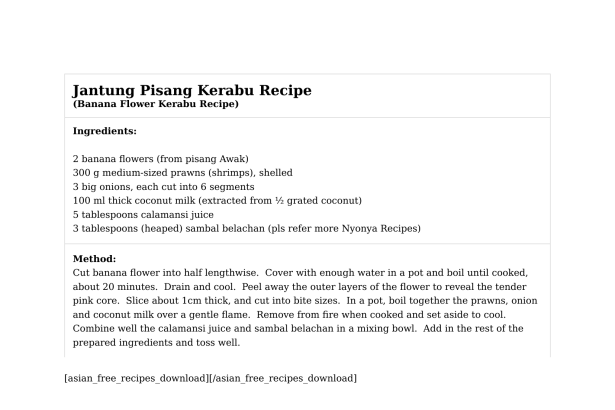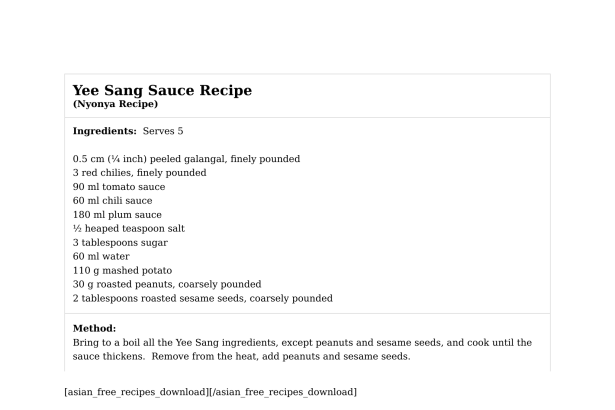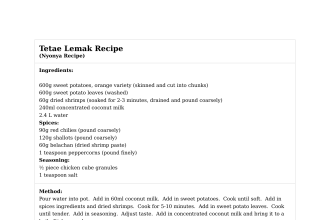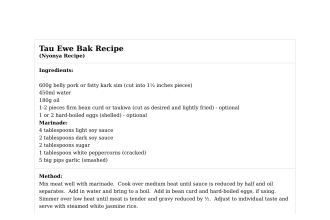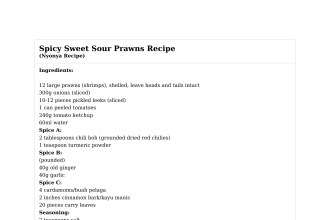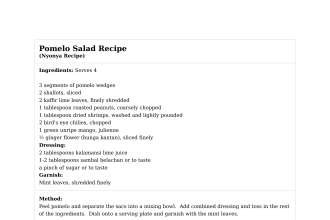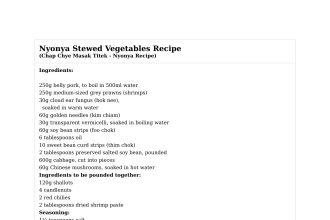Tetae Lemak Recipe
Tetae Lemak Recipe(Nyonya Recipe)Ingredients:600g sweet potatoes, orange variety (skinned and cut into…
Tau Ewe Bak Recipe
Tau Ewe Bak Recipe(Nyonya Recipe)Ingredients:600g belly pork or fatty kark sim (cut…
Spicy Sweet Sour Prawns Recipe
Spicy Sweet Sour Prawns Recipe(Nyonya Recipe)Ingredients:12 large prawns (shrimps), shelled, leave heads…
Salted Duck Eggs Recipe
Salted Duck Eggs Recipe(Nyonya Recipe)Ingredients:10 fresh large duck eggs900g coarse or rock…
Spicy Duck Stew Recipe
Spicy Duck Stew Recipe(Nyonya Recipe)Ingredients:2 large pieces duck breasts2 large pieces roasted…
Pomelo Salad Recipe
Pomelo Salad Recipe(Nyonya Recipe)Ingredients: Serves 43 segments of pomelo wedges2 shallots, sliced2…
Prawns in Pineapple Curry Recipe
Prawns in Pineapple Curry Recipe(Udang Kuah Pedas Nanas - Nyonya Recipe)Ingredients A:14…
Papaya Soup Recipe
Papaya Soup Recipe(Nyonya Recipe)Ingredients A:3 candlenuts1 tablespoon dried shrimp paste90g shallots2 red…
Pasembor Recipe
Pasembor Recipe(Nyonya Spicy Salad Recipe)Ingredients:225g prawns (shrimps), shelled, cleaned and drained250g flour1…
Nyonya Stewed Vegetables Recipe
Nyonya Stewed Vegetables Recipe(Chap Chye Masak Titek - Nyonya Recipe)Ingredients:250g belly pork,…
